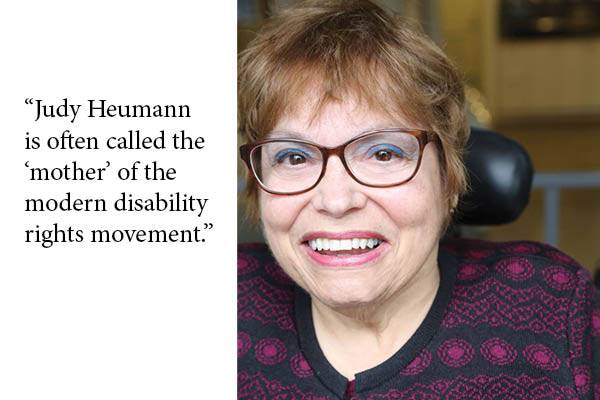Guest Blog: The Women who Came Before Us

When I was 11 years old, I watched a movie called The Miracle Worker, which was my first introduction to Helen Keller. After watching the movie, I read all I could about her. As part of a school assignment in 6th grade, I wrote her a formal letter of thanks. Her story inspired me to keep progressing despite the frustrations of my physical disability. I thought, “If Helen can do it, I can too!” From Helen and her teacher, Anne Sullivan, I learned about persistence, even when things are hard.
Helen became an author, lecturer, and activist for disability rights, women’s rights, worker’s rights, and education, and did not hesitate to share her opinions. As an 11-year-old, my mind focused on the things Helen accomplished. As an adult, I have realized how fundamental Anne Sullivan was in her life. Anne believed Helen was capable of learning despite being both deaf and blind. Helen compares Anne’s influence on her to the Israelites being led out of Egypt. In a speech to the U.S. National Education Association in 1938, Helen said, “What do I consider a teacher should be? One who breathes life into knowledge so that it takes new form in progress and civilization.”
Another trailblazer in the education of disabled people was Judy Heumann, who is often called the “mother” of the modern disability rights movement. Born in 1947, she contracted polio at age two and doctors told her parents to institutionalize her because she’d never be able to walk. They refused, but when they tried to put her into kindergarten, the school principal said a wheelchair user would be a “fire hazard.” Her parents fought for Judy to have access to a classroom. She went on to earn college degrees, but in the 1960s, the New York Board of Education refused to give her a teaching license because they feared she could not help students or herself evacuate in case of fire. She sued and went on to become the first teacher in the state to use a wheelchair. This was only the beginning of her activism. She was instrumental in the development and implementation of several pieces of disability rights legislation, including the Individuals with Disabilities Education Act (IDEA) and the Americans with Disabilities Act (ADA). The IDEA became law in 1975 and makes available free appropriate public education to eligible children with disabilities and ensures special education and related services to those children. The ADA became law in 1990 and provides protection against disability discrimination in employment, public services, and accommodations.
I attended mainstream public school. I loved the challenge of getting good grades, along with compliments from my teachers and classmates. I planned from the start to go to college. And I wanted to become employed, and I knew it would be difficult but possible. I’ve done all these things, with accommodations. It is sobering to think that when my parents were born in the 1950s, these opportunities were not available to someone like me.
I love the computer and all it can do now, including the internet. I can type out my thoughts more quickly and easily than writing them by hand. I use the computer for work and play. It gives me a level of independence I don’t have in any other context. In the last 10 to 20 years, most of us have acquired computers that fit in our pockets (our smartphones). Computer technology is everywhere, and we have Grace Hopper to thank for that. She joined the U.S. Navy in 1943 and was assigned to the Bureau of Ships Computation Project at Harvard University. There, as one of the first computer programmers, she was responsible for programming the Mark I (one of the earliest electromechanical computers) and punching machine instructions onto tape. She also wrote its user manual. A few years later, as head programmer for Remington Rand, she worked on the UNIVAC (Universal Automatic Computer). Her team developed Flow-Matic, the first programming language to use English words as commands, rather than mathematical symbols.
She felt that this would allow people who weren’t mathematicians or engineers to be able to use the computer easily. When others were skeptical about what computers could do, Grace Hopper was confident about their potential. She predicted that computer science would continue to progress, and it certainly has.
Another incredible woman to me is my 3rd great grandmother, Elizabeth Skellington McCowan. She was born and raised in England, but later she and her husband decided to emigrate to America. Her husband left England in 1850 to find work to have enough money to bring her and the children over. The last letter Elizabeth received from him said that all the money would be in the next letter. That letter never came. Eventually, Elizabeth found out that her husband had died in a cholera epidemic in St. Louis. Obtaining financial assistance from a church immigration fund, she decided to still immigrate to America, alone with her three children. They sailed to America on the Camillis in June 1853 and crossed the plains in the John Brown wagon company to Utah. I am here today because a widow had the courage to take her three children across the ocean and then overland to a new home.
As we celebrate women’s history month, let us remember not only women who are world- famous, but also women who have contributed personally to our lives, and the female ancestors.

